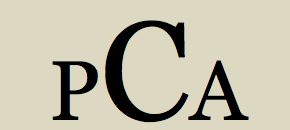Aug 6 2012
Fresh eggs, droppings, chicken coops –
The Piedmont Planning Commission will consider
Piedmont resident Martha Bureau asked the Commission to consider establishing regulations. Bureau also mentioned the possibility of Histoplasmosis, a fungal infection that can be carried on the feathers of chickens and that can thrive in their droppings. In addition, a petition was signed by 26 residents requesting restrictions and guidelines on backyard chickens. A number of Piedmont residents keep chickens in their backyards, as reported in a Patch article.
No formal action will occur at the meeting. The August 13th meeting will be the fourth in a series of
Other communities have adopted the following requirements for backyard chicken husbandry in single-family residential zones:
- A minimum lot size and unbuilt area.
- Specify the size and placement of a chicken coop and run in proximity to dwellings, property lines and neighbors.
- Limit the number of chickens (female hens and pullets) and exclude roosters.
- A no-fee registration for properties engaging in chicken husbandry, before any chickens are on the property.
- Multi-family, urban centers, and business areas are excluded.
Many communities are discussing urban agriculture at this time and making adjustment in their Municipal code to deal with the growing phenomenon. Seattle, Washington adopted a new Municipal Code for Urban Farms and Community Gardens in August 2010.
The Commission meeting will start at 5:00 p.m. on Monday, August, 13, 2012 in City Hall Council Chambers. Attached is the agenda for the meeting, and this discussion is number 14 on the Agenda. There will be at least five future Planning Commission or City Council hearings on the overall Code changes. Contact City Planner Kate Black for further information at 510-420-3050.
The request and petition are available at City Hall, but not online .
Staff report on: REQUEST TO REGULATE CHICKEN COOPS AND THE KEEPING OF CHICKENS:
Unlike the topics in the first three reports which were brought to the Commission by staff, this report introduces a request submitted by resident Martha Bureau, who resides at 140 Wildwood Avenue, along with a petition, signed by 26 residents and neighbors supporting the request.
As indicated in the request, they are asking the Commission to develop Code amendments aimed at regulating the keeping of chickens within City limits. Attached to the request is a summary of code regulations for six Alameda County cities, unincorporated Alameda County, and three Contra Costa County cities. Additionally, Ms.
Bureau has submitted information about Histoplasmosis, an illness that can be caused by bird or bat droppings.
CURRENT CITY CODES:
From a use perspective, there are currently no prohibitions to the keeping of chickens in City limits. The Piedmont Municipal Code maintains a list of certain wild and/or dangerous animals and reptiles that are prohibited1 but the list does not include chickens. The Code does state that all permitted animals must be kept in such a manner that they don’t cause “excessive noise or offensive odors, damage to property, or a clear or present danger to the public health, safety and general welfare”2.
From a physical perspective, there are current regulations related to the construction of structures or fencing which under certain circumstances, apply to physical features related to the keeping of chickens. Chicken coops are considered to be secondary structures, and are regulated in accordance with the Code provisions of the underlying zone, depending on location and height of the coop (please see Exhibits B and C, which define the regulations and procedures in Zones A and E). Fencing used to pen and protect chickens is not regulated unless it is proposed to be higher than 6’, or located within 20’ of a street-facing setback.
OPTIONS FOR COMMISSION CONSIDERATION:
Most of the communities in the summary of codes provided by Ms. Bureau specify minimum distances between the coops and dwellings, and/or between coops and property lines. Staff believes that other jurisdictions limit the number of chickens permitted, and some prohibit roosters, which are considered to be noisier.
Should the Commission think it is appropriate to consider changes to the Code to regulate chickens, staff will more fully evaluate how other jurisdictions with characteristics similar to Piedmont (lot size, single-family zoning, physical density of development, etc.) address the topic, and will prepare possible amendments to the Code for consideration at a future hearing.
EXHIBITS:
Exhibit A Locating Structures in Zone A
Exhibit B Locating Structures in Zone E
1
§12.18 Wild or Vicious Animals-Keeping, Etc. – Prohibited (animals in list: elephant, bear, hippopotamus, rhinoceros, lion, tiger, leopard, wolf, ape, cheetah, chimpanzee)
2
§12.20 Animals Causing Noise, Offensive Odors, Etc.



